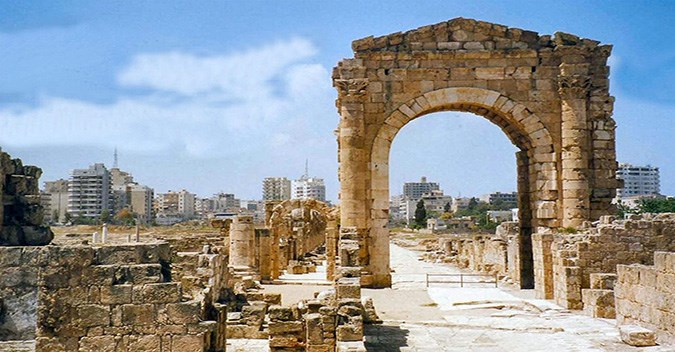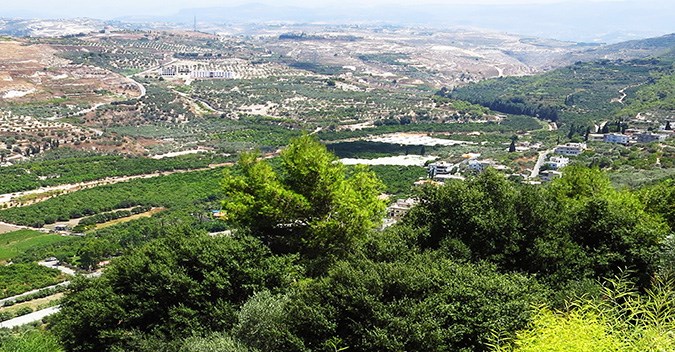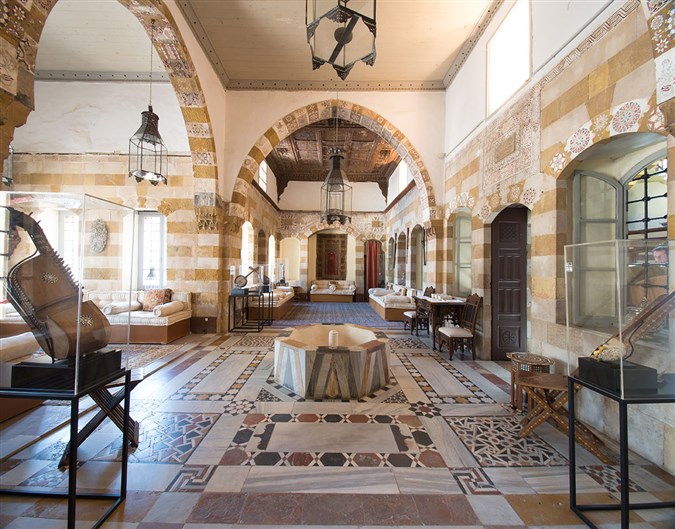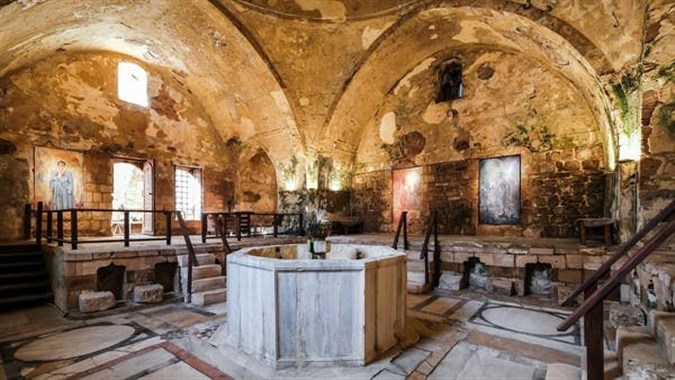-
-
LATEST NEWS CLICK HERE


Sidon, Tyre & Maghdouche (without Lunch)
From 01 January till 31 March 2024Highlights- Sidon is of immense antiquity, but few remains of the ancient city have survived the ravages of time and man.
- Tyre is an ancient Phoenician city and the legendary birthplace of Europa and Dido (Elissa). Today it is the fourth largest city in Lebanon[4] and houses one of the nation's major ports.
- Maghdouché's most famous landmark is the tower of Our Lady of Mantara, which is a Marian shrine built (May 16, 1963),[7] above the cave that is believed to have been the resting place of the Virgin Mary as she waited for Jesus while he preached in Sidon.
- Mon
- Tue
- Wed
- Thu
- Fri
- Sat
- Sun
- STARTING PRICE $78
- Info Visit the Sea Castle, Khan El Franj & Soap museum in Sidon then the Necropolis and Sea site of Tyre. After lunch, we visit the Maghdouche where Holy Virgin Mary used to wait for Jesus while he was preaching in Sidon.
-
Languages


-
Includes
Transportation in a deluxe vehicle, pickup-drop off from/to Beirut, professional guide, entrance fees and VAT.
 Send Your Request
Book Online
Send Your Request
Book Online
-
Sidon, Tyre & Maghdouche
-
SidonThe third great Phoenician city-state, Sidon's origins are lost from memory. The name was mentioned in the texts for the first time in the 14th century B.C. in the 'Tell El Amara Letters'. But it was during the Persian era, between the end of the 6th century B.C. and the mid-4th century B.C. that the city experienced its golden age.Sidon was an open city with many cultural influences, including the Egyptian and the Greek.During the Persian period, Aegean sculptors contributed to the nearby temple of Eshmoun, the city's god. He was associated with the Aesculapius, the Greek god of healing.After its revolt against the Persians and destructions in 351 B.C., Sidon never regained its former glory. But the city's position had improved by 551 A.D., when after the disastrous earthquake of that year it was chosen as the site of Beirut law school. The crusader period, between 1110 and 1291, brought Sidon new prestige as the second of the four baronies of the Kingdom of Jerusalem. Today the ruins of the Crusader sea Castle and the Castle of Saint-Louis, Known as the land castle, can still be seen in Sidon.From the Mamluke and Ottoman periods we have the Great Mosque, built on the foundations of a Crusader building and the Khan 'el – Franj" built by Fakhreddine II.Today the town 41 Kilometers from Beirut, has grown into a thriving commercial and business centre serving the entire region.
Debbane Palace-Sidon: Debbane Palace is an 18th-century building in Saida, built by Ali Hammoud in 1721. The atmospheric space features typical diwans (Oriental style living rooms), a liwan (a long narrow-fronted hall), several rooms and an open-air courtyard, with the characteristic features of the Ottoman period – brown and white stripes of stone and intricate mosaic tiles making up the interior. Despite its location on the bustling streets of Saida, the house is a peaceful escape.
Hammam El Jadeed-Sidon: Hammam Al Jadeed is the largest and most significant bathhouses located in the ancient city of Saida, in the neighborhood known as "Hammam Al Jadeed District". Built in 1720, it was closed down in the late 1940s then re-opened in May 2019 as a heritage and cultural venue has remarkable ornaments and consists of a large hallway and several small rooms with Ottoman structural design.
TyreAlthough the earliest origins of Tyre are unknown, the testimonies of ancient historians and some archeological evidence suggest that it goes back to the start of the 3rd millennium B.C. Originally a mainland settlement with an island city a short distance offshore, it came of age in the 10th century B.C. when King Hiram expanded the mainland and built two ports and a temple to Melkart, the cityIts flourishing maritime trade,'s god.Its flourishing maritime trade, Mediterranean colonies and its purple dye and its purple dyeand glass industries made Tyre very powerful and wealthy. But the city's wealth attracted enemies.In the sixth century B.C. the Tyrians successfully defied Nebuchadnezzar for 13 years. Alexander the Great laid siege to it for 7 months, finally overwhelming the island city by constructing a great causeway from the shore to the island. In their day the Romans built a magnificent city at Tyre. The remains of its Roman streets, arcades and public buildings, including one of the largest hippodromes of the period, are Tyre's major attractions today.Occupied by the Moslem Arabs in 636, then captured in 1124 by the Crusaders, Tyre was an important fortified town of the Kingdom of Jerusalem. In 1291 the Mamlukes took the city, then during the 400-year Ottoman period beginning in 1516, it remained a quiet fishing town.In 1984 Tyre's important archeological remains prompted UNESCO to make the town a world heritage site. Located 79 km from Beirut, prosperous Tyre is notable for its many high-rise buildings. Nevertheless, the inner city has retained its industrious maritime character and its interesting old-style houses.MaghdouchéThe name, Maghdouché, originates from the Syriac word, which means "crop collectors." It is also derived from the Syriac word Kidsh and its derivatives (Kadisho, Kadishat, Makdosho). In Hebrew, it means "holy" or "saintly." According to Christian belief, when Jesus came to Sidon, the Virgin Mary who accompanied him, waited for him at the top of the hill where Maghdouché is located today. She spent the night in a cave that came to be known as Mantara, or the "Awaiting."Emperor Constantine the Great responded to St. Hélène's request and transformed the cave into a sanctuary for the Virgin. He erected a tower in honor of the Virgin. The tower collapsed during the earthquake of 550. Later, King Louis IX erected a watching tower in the same location. The Mantara cave was once again discovered accidentally by a shepherd in 1726. An icon of the Virgin was also discovered, and it was of Byzantine style, dating back to the 7th or to the 8th century. Since then, the cave has been transformed into a place of pilgrimage for all the Lebanese confessions. In 1860, the Greek Catholic Church became the owner, and transformed the cave into a sanctuary in 1880.At the beginning of the sixties, under the auspices of Mgr Basile Khoury, renowned architect Varoujan Zaven designed and executed a beautiful hexagonal chapel topped by a 36-meter tower in a conical shape to support an 8 and a half meter one-piece bronze statue of the Virgin Mary holding Jesus in her arms, of his own design as well, realized by Italian artist Pierrotti in Pietra Santa. The design and supervision of the project were both a donation on behalf of the architect. Our Lady of Mantara is considered the protectress of children, and many baptisms are celebrated at the sanctuary. -
General Conditions
-
- Rates include transportation in deluxe Motorcoaches or vans, services of professional English and French speaking guides, lunch, entrance fees and VAT.
- Children up to 3 years are free of charge but have no seat.
- Children between 3 and 12 years get $15 discount. No discount for half day tours and tours without lunch.
- Payment in cash or by credit card.
- All prices and programs are subject to change without prior notice.
FREE PICK-UPS:
Departures of all tours are at 08:30 from our office. Pick ups are provided free of charge from all hotels in Beirut for bookings received up to 20:00 of the day preceding the tour.
Guests are requested to be at the reception desk of their hotel starting 07:45. Drivers may pass any time between 07:45 and 08:00. They are instructed not to wait.
Guests missing their pick-up will have to come to our office at their own expense.
Important Notes:
- The company is not responsible for forgotten items on the daily tours. Lost and found items will be kept at Nakhal offices for collection for a maximum of 30 days.
CloseSend A RequestBook Your Tour




